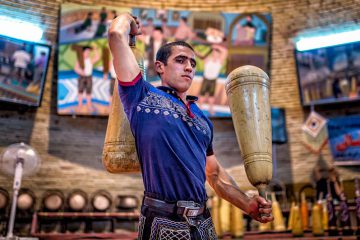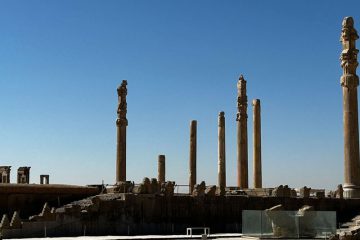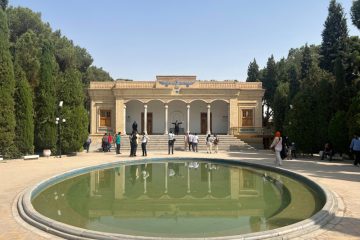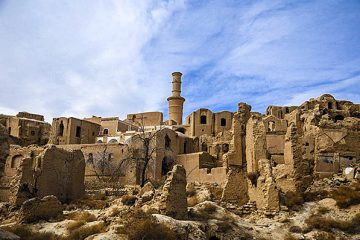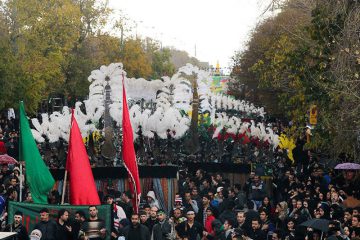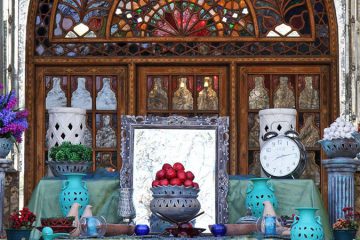
Qashghai Nomads
Qashghai Nomads Moving with their flocks from the shores of the Persian Gulf in winter to the cooler mountains around Esfahan in summer, the Qashqai people are a nomadic group from Iran of Turkic origin who, mostly, still lead a traditional life, not very different from that of their ancestors.
Today, it’s believed that around one million of the people living in Iran are full-time nomads representing 1.25% of the total population. This means that Iran has one of the biggest nomadic populations of any country, together with Asian countries such as Kyrgyzstan or Mongolia.
Moreover, Iran is so culturally and ethnically diverse that even its nomadic population is classified into different groups and tribes with the Qashqai people being, perhaps, the largest one.
The Qashqai nomads, also known as Ghashqai, are a nomadic tribe originally from Turkey, who keeps moving across the Zagros Mountains, a mountain range located in western Iran, which kind of draws the border with Iraq.
The Ghashqai tribe’s main language is a Turkish dialect but, except for some of the oldest people, all of them can speak Farsi fluently, which is the official language of Iran.
Like most Iranians, they are Shia Muslims.
History
Qashqai in Iran (red)
Historically, the Turkic languages are believed to have arrived in Iran from Central Asia from the 11th or 12th centuries onwards.
“To survive, nomads have always been obliged to fight. They lead a wandering life and do not accumulate documents and archives.
But in the evenings, around fires that are burning low, the elders will relate striking events, deeds of valour in which the tribes pride themselves. Thus the epic tale is told from father to son, down through the ages.
The tribes of Central Asia were forced by wars, strife, upheavals, to abandon their steppes and seek new pasture grounds…so the Huns, the Visigoths, and before them the Aryans, had invaded India, Iran, Europe.
The Turks, forsaking the regions where they had dwelt for centuries, started moving down through the Altai Mountains and Caspian depressions, establishing themselves eventually on the frontiers of the Iranian Empire and in Asia Minor.
Though these versions differ, we believe that the arrival of our Tribes in Iran coincided with the conquests of Ghengis Khan, in the thirteenth century. Soon after, our ancestors established themselves on the slopes of the Caucasus. We are descendants of the “Tribe of the Ak Koyunlu” the “Tribe of the White Sheep” famed for being the only tribe in history capable of inflicting a defeat on Tamerlane. For centuries we dwelt on the lands surrounding Ardebil, but, in the first half of the sixteenth century we settled in southern Persia, Shah Ismail having asked our warriors to defend this part of the country against the intrusions of the Portuguese. Thus, our Tribes came to the Province of Fars, near the Persian Gulf, and are still only separated from it by a ridge of mountains, the Makran.
The yearly migrations of the Kashkai, seeking fresh pastures, drive them from the south to the north, where they move to their summer quarters “Yailaq” in the high mountains; and from the north to the south, to their winter quarters, “Qishlaq”.
In summer, the Kashkai flocks graze on the slopes of the Kuh-è-Dinar; a group of mountains from 12,000 to 15,000 feet, that are part of the Zagros chain.
In autumn the Kashkai break camp, and by stages leave the highlands. They winter in the warmer regions near Firuzabad, Kazerun, Jerrè, Farashband, on the banks of the river Mound, till, in April, they start once more on their yearly trek.
The migration is organised and controlled by the Kashkai Chief. The Tribes carefully avoid villages and towns such as Shiraz and Isfahan, lest their flocks, estimated at seven million head, might cause serious damage. The annual migration is the largest of any Persian tribe.
It is difficult to give exact statistics, but we believe that the Tribes now number 400,000 men, women and children.” Told to Marie-Tèrése Ullens de Schooten by the ‘Il Begh’ Malek Mansur, brother of the ‘Il Khan’, Nasser Khan, Chief of the Kashkai Tribes, in 1953.
Nomadic Qashqai man with his hookah. Sepidan county, Iran.
Qashqai Hunter and his wife
The Qashqai were a significant political force in Iran during the late 19th and early 20th centuries. During World War I they were influenced by the German consular official Wilhelm Wassmuss and sided with the Germans. During World War II the Qashgais attempted to organize resistance against the British and Soviet occupation forces and received some ineffectual help from the Germans in 1943 by the means of Operation ANTON, which (along with Operation FRANZ) proved a complete failure. In 1945–1946 there was a major rebellion of a number of tribal confederacies, including the Qashgais, who fought valiantly until the invading Russians were repelled. The Qashgais revolted during 1962–1964 due to the land reforms of the White Revolution. The revolt was put down and within a few years many Qashqais had settled. Most of the tribal leaders were sent to exile. After the Iranian Revolution of 1979 the living leader, Khosrow Khan Qashqai, returned to Iran from exile in the United States and Germany.
some contents were taken from wikipedia by tours of iran team.
Fine and delicate like Miniature

